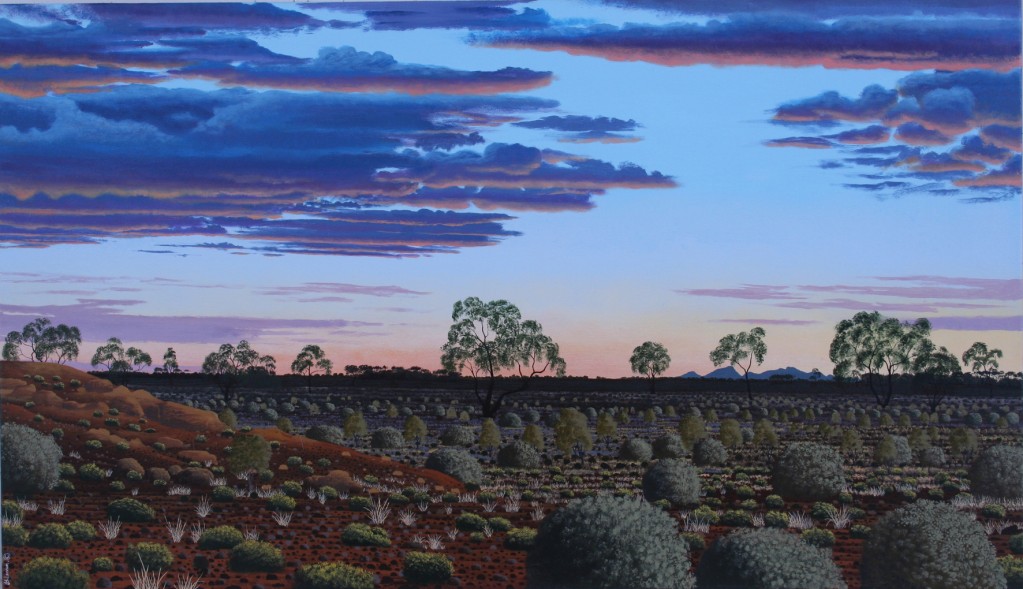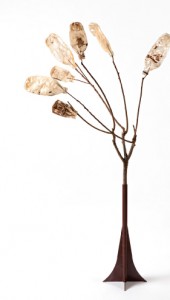Posts tagged Adelaide Art Reviews
RAW: SALA – Our Mob – Artspace / Fest Theatre – Till 5 Sept – 4K
Aug 13th
 Our Mob is a state-wide celebration of regional and remote South Australian artists. This is its fifth year and derives from a desire to develop a sustainable and dynamic indigenous arts industry, now enshrined in the Statewide Indigenous Community Artists Development (SICAD) program. This year’s exhibition features Ngarrindjeri artists from the Riverland and Coorong.
Our Mob is a state-wide celebration of regional and remote South Australian artists. This is its fifth year and derives from a desire to develop a sustainable and dynamic indigenous arts industry, now enshrined in the Statewide Indigenous Community Artists Development (SICAD) program. This year’s exhibition features Ngarrindjeri artists from the Riverland and Coorong.
There are perhaps two stand-out feature works that certainly warrant the time to visit. Major Sumner’s Tree Canoe sits in the midst of the works resting on sand on the floor. A Ngarrindjeri elder, Sumner describes his canoe as a homage to the tree from which it is cut, being more than 100 years old, and to children as an example of both technique and culture. It is certainly impressive and as clear as anything could be of the close inter-relationship between the land and its uses by indigenous communities for thousands of years.
Beaver Lennon’s Break of Dawn (attached above) is notable for two reasons. First, it is one of the few works on display clearly borne of white man styles and techniques, Jack Absalom would be proud of the gums and the spinafex. The heavy, dewy atmospherics of the work with the dark under sides of the clouds, tinged with the dawn’s crimsons, pose the question of whether this is about the on-coming of a cultural storm or the dawn of new, brighter day. The second notable feature is that this work won the inaugural SA Indigenous Acquisitive Art Award of $5000 (thanks to an anonymous donor) that sees the work go into the Adelaide Festival Centre’s Indigenous Art Collection.
Also of note is the exquisite brush work of Roger (Bushfire) Saunders in his Spirits of Change and the raw talent of 9 year old, Ella Ackland’s Snake Protector, an acrylic on bark work of a snake slithering for safety.
Finally, of considerable interest is Narelle Unmeopa’s Emu Egg. Her daughter’s Emu egg is also there, a brightly coloured collectible, but Narelle’s exhibits extraordinary craftsmanship being symbols left as shell after all else has been scraped and sanded away down to the finest skin or membrane before reaching the egg’s yoke – no paint applied.
Kryztoff Rating 4K
Image: Beaver Lennon, The Break of Dawn, acrylic on canvas, 2010
RAW: SALA Drop The Dust – Kouwenhoven and Worth – 4K
Aug 10th
 Drop The Dust By Pamela Kouwenhoven and Margaret Worth – Flinders Uni Art Museum (State Library) – Till 29th August
Drop The Dust By Pamela Kouwenhoven and Margaret Worth – Flinders Uni Art Museum (State Library) – Till 29th August
The role of dust in our lives and the decay that leads to becoming dust is well explored in this small exhibition of both two and three dimensional works by these South Australian artists. At the big end, stands a decaying, rusted and old rainwater tank, with detritus from the water held, its decay or role as a collecting vessel assembled at its base. At the other end are ‘dust domes’, six transparent bell jars with architectural models of domestic residences in them that are overwhelmed by dust and other waste that one would commonly expect to exhume from a vacuum cleaner.
In the middle, paintings or panels spread with red dust collected from the Amata Aboriginal settlement. The intensity of these panels give the viewer the opportunity to see them either as cross sections of an ancient outback soil profile or aerial views of a seemingly never ending desert. The whole makes one feel like you have been dropped into the yard of an outback station with domesticity available at short hand but beyond all existing at the whim of the elements.
This is a very Australian exhibition that takes a new look at a very well covered homage to our outback and our ability to survive in it.
Floor talks by the artists, this Saturday, 14th August, at 2pm.
Kryztoff Rating 4K
RAW: SALA Ann Newmarch – Flinders Uni Art Museum (State Lib) – 3K
Aug 4th
Cultural Pattern and Human Fragility By Ann Newmarch – Flinders Uni Art Museum (State Library) – Till 29th August
Ann Newmarch’s 25th solo exhibition comprises 16 works and opinion may well divide on their merits. To be sure they are complex, any one incorporating many motifs that span on one axis of thought cultural items like Afgham rugs, rosettes, Italian and Greek monuments and on the other images of war and death such as the silhouettes of rifles, the photo of Kim Phuc fleeing a napalm attack in the Vietnam war and a trader falling to his death from one of the twin towers on 9/11.
There is also a beauty about them in that they hang well together and can sustain individual curiosity as well filling a space on a wall. However, the repetition of the images across all 16 works and overall feel somewhat confound the individual and often distinct titles and commentary associated with each.
Newmarch speaks in the catalogue of how ‘these images grew bit by bit without much consideration for the big picture. I felt like I was dissolving into each area I altered or added (a bit like a quilt, the complexities of each stitch.)’ Janet Maughn speaks of ‘the messages appear not so obviously. These are pictures that reward close inspection of different parts of the picture surface; that hint at relationships and encourage the viewer to make connections across cultures, across time and across events.
Thus the divide on these works is either they are a hotch potch of icons that will resonate from one’s consciousness that holds together as complex and colourful or the trained eye will make out these connections of culture and war and tie them in with their titles. But if the artists didn’t seem to know where they were going, I am unsure why viewers should or would.
Kryztoff Rating 3K